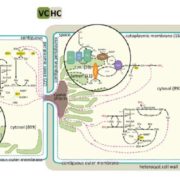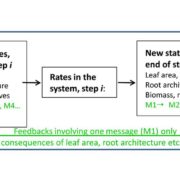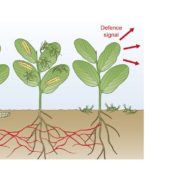
Two-cell metabolism in multicellular cyanobacteria ($)
Plant Science Research Weekly, Research0 Comments
/
Nitrogen-fixing cyanobacteria such as Anabaena sp. PCC 7120 have the challenge of supporting nitrogenase, an enzyme that is highly sensitive to oxygen, and simultaneously photosynthesis, an oxygen-producing set of reactions. They accomplish this by segregating these reactions into two cells, heterocysts…

Technical Advance: A robust, high-throughput method for computing maize ear, cob and kernel attributes automatically from images
Plant Science Research Weekly, Research
The yield of a maize plant is correlated with the size, shape and number of kernels it produces. Miller et al. have developed an automated system to quantify these crucial attributes from photographs of kernels both on and off the cob. Their methods will enable researchers and breeders to record…

Commentary: Chemical nature of the root-shoot signals
Plant Science Research Weekly, Research
Unravelling the mechanism and signals originating from roots and able to contribute to stomatal control has been the subject of research for decades. In this commentary, Tardieu summarizes and discusses many studies and models on root-shoot signals, including work in the same issue by Visentin et…

Review: Advances on plant-pathogen interactions from molecular through systems biology perspectives ($)
Plant Science Research Weekly, Research
In an interesting and accessible review, Peyraud et al. provide a big-picture view of how systems biology can be used to address plant-pathogen interactions. They describe the core interactions scaling from molecular to ecosystem / environment, and describe the different types of models that can…

Review: Applications of plant volatile-mediated signaling
Plant Science Research Weekly, Research
Smell is one of the many senses that insects use to locate the plants that they use as food sources. Plants have evolved ways to exploit insects’ sense of smell, for example by producing volatile compounds that attract pollinators. Pickett and Khan review plant volatile–mediated signals in terms…

Review: Programmed Cell Death in Development and Disease
Plant Science Research Weekly, Research
Programmed cell death (PCD) is an active process that occurs as part of normal development and also contributes to defense against pathogens. While there are many similarities in developmental PCD (dPCD) and pathogen-triggered PCD (pPCD), there are also differences. Huysmans et al. review and contrast…

